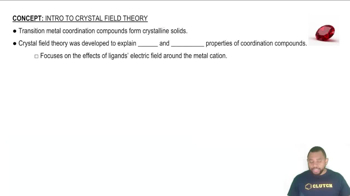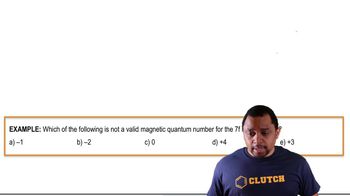Textbook Question
A classmate says, “A weak-field ligand usually means the complex is high spin.” Is your classmate correct? Explain.

 Verified step by step guidance
Verified step by step guidance


A classmate says, “A weak-field ligand usually means the complex is high spin.” Is your classmate correct? Explain.
For a given metal ion and set of ligands, is the crystal-field splitting energy larger for a tetrahedral or an octahedral geometry?
Complete the exercises below. Draw the crystal-field energy-level diagrams and show the placement of electrons for each of the following complexes:
a. [VCl6]3–,
b. [FeF6]3– (a high-spin complex),
Draw the crystal-field energy-level diagrams and show the placement of electrons for each of the following complexes:
d. [NiCl4]2+ (tetrahedral),